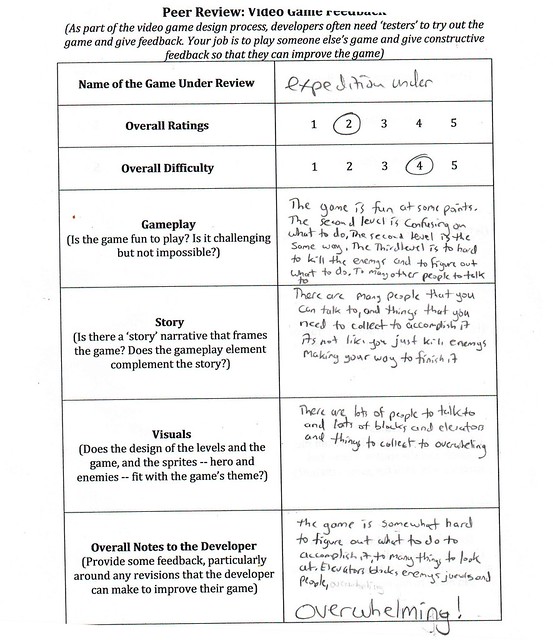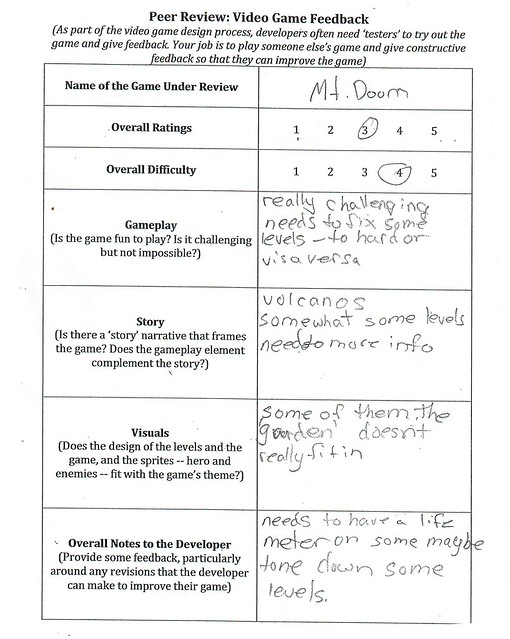We spent part of our time yesterday allowing classmates an opportunity to play each other’s games, and then offering up a critique of the gameplay and game design for the developer. I provided a graphic organizer to keep their attention focused on the elements we have been discussing: story, science themes, gameplay, design, etc. As I wandered the room, I took a few notes of the conversations taking place. Most were very positive, and supportive.
Here is a bit of what I heard (as a former reporter, I often jot down notes when my class is doing something interesting):
“Who wants to try to my game? Anyone?”
“I do.”
“Me, too.”
“Me!”
—–“Arrrrr.”
“What?”
“This is so hard. Why did you make it so hard?”
“It’s not hard. I can do it.”
“You made the game. Of course, you can do it.”
“Here, let me show you ..”
—–“I like that. How did you do that?”
“Do what?”
“Find that color for the background. It’s perfect for inside the volcano. I want that background, too.”
“It’s in the Quest. You need to earn it. It’s in the xxx level.”
“I’m not that far. Darn.”
“How far are you? I can help you get there. Come on.”
—–“That was … easy.”
“Too easy?”
“Yeah.”
“I thought it would a challenge. Why was it easy?”
“You just had to run fast. I ran fast.”
“Oh. Yeah.”
—–“I wonder if anyone on Gamestar will play my game.”
“Probably. Did you publish it yet?”
“No. But I will.”
“You should. You definitely should.”
“Thanks.”
In some ways, the casual conversations as the developer looked over the shoulder of the player was more valuable than the written feedback, but I am determined to keep writing at the center of this project. Here are two samples of student feedback forms, which pretty much capture the essence of many of the peer review ideas of the day.


Peace (in the feedback loop),
Kevin